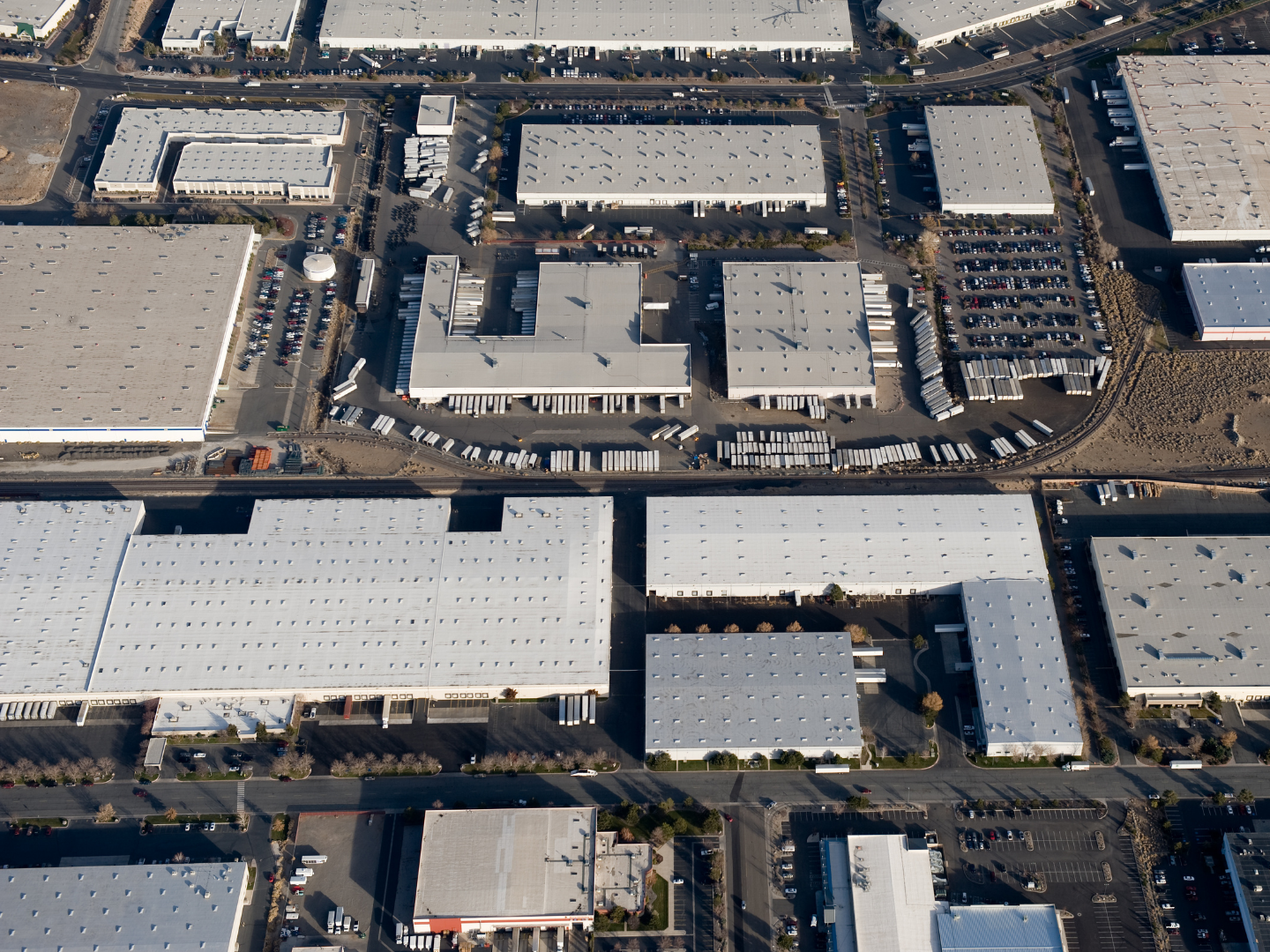What is Commercial Roofing?
Commercial roofing refers to the installation of commercial roofs for businesses, warehouses, and other large commercial structures. A commercial roof provides protection from the elements like snow and rain for the contents and occupants of the business inside.
A sound roof is critical to a business’ operation, as even minor leaks can lead to expensive repairs and disruption to the day-to-day business operation.
How does commercial roofing differ from residential roofing?
Commercial roofing systems and residential roofs have essentially the same function – to protect property by preventing rain, hail, and melting snow from getting to the structure’s interior.
When it comes to the materials utilized to create and install them, residential and commercial are rather different, however.
Single-ply (TPO, PVC, EPDM), concrete, modified bitumen, built-up roofing system (BUR), tar, and gravel are the most common materials utilized in commercial roofing systems. Most are built over sheet metal decking, though some commercial buildings employ wood decking.
Residential roofs, more often than not, are made of asphalt shingles in the midwestern states.
Perhaps the biggest difference between commercial and residential roofing is the size of the structure and the area of the roof itself. A commercial roof will typically be much larger than a residential roof.
Though they are often flat, commercial roofs also tend to have more complex slopes, curves, and penetrations, making them more complicated to install and maintain.
Additionally, they are often made from heavier materials in order to withstand greater wear and tear.
What is the difference in roofing materials between commercial and residential roofs?
There is no one-size-fits-all answer when it comes to the most common materials used for commercial and residential buildings. The price, life expectancy, and application for roofing materials vary considerably.
COMMERCIAL ROOFS
A commercial roof is typically a flat or nearly flat metal or membrane structure. Residential roofs are generally much steeper and come with various aesthetic options.
It takes skilled roofing experts to meet the demands of either type of roofing. They can offer the best advice on which materials will work best for each situation. This is especially true for commercial roof installers due to the more technical nature of commercial roof installations and the complexity of the installation process.
This is why commercial roofing companies with outstanding reputations who employ skilled installers, like Mint Roofing, are in great demand.
RESIDENTIAL ROOFS
Asphalt shingles are one of the most common residential roofing materials in Minnesota. They are less expensive than other roofing materials and are available in a variety of colors and styles. They are also easier to install and do not require the highly skilled labor necessary for commercial roofing.
Cedar shake roofs are another popular material used on Minnesota homes. They give homes a rich, natural appearance and can last for decades with proper maintenance. They are typically used on premium homes due to their expense.
Thanks to their durability and environmental benefits, residential metal roofs have become increasingly popular in recent years. Metal roofs can last for 50 years or more with minimal maintenance and are often made from recycled materials.
You can even get metal roofs that resemble shingles, Spanish tile, or wood shakes, giving homeowners superior durability in a traditional design. They are, however, one of the most expensive residential options, especially when using exotic metals like copper.
Typically, residential roofs are built on a plywood decking base. The shingles are then attached to this base and secured using nails, screws, or adhesive. A layer of felt paper goes between the decking and the shingles to provide an additional layer of protection against leakage if moisture gets through.
Do commercial roofers and residential roofers have different skills?
Commercial and residential roofers may share some basic carpentry or mechanical skills, but they generally possess entirely different skill sets. One thing both have in common is a comfort level with heights.
Residential roofers work in crews that are trained to re-roof homes quickly. A single crew can often perform a tear-off of the old roof and install a new roof on two houses per day. Larger crews may split between tear-off and installation teams, allowing one company to replace many roofs in a day.
Commercial roof projects are far more complex and can take days or weeks to complete, depending on the size and type of building and roofing material. Commercial roof installers have more experience working with large-scale roofs, which are more complicated than residential roofs.
They also have more experience with unusual roof shapes and different types of materials, which can be important for businesses that want a unique or specialized roof.
Commercial roofers are often better at dealing with weather-related problems, such as leaks and water damage. They may also have more experience working in extreme weather conditions, such as hot summers and cold winters where most residential roofing is only done in the warmer months.
Commercial roofers also have more experience working with high-rise buildings, which require special equipment to hoist materials and equipment to the roof’s surface.
Conclusion:
Most of us are familiar with the roofs on our homes, but not many know how commercial roofs differ. Unlike the roof on your home, the roof on the businesses you frequent go largely unnoticed unless you are in an urban setting with high-rise office buildings.
We hope this blog post has been helpful as you explore the unique nature of commercial roofs. Oh, and one important thing we should mention is that you won’t find commercial roofing companies going door-to-door after a bad storm. We leave that to the residential storm chasers.
So, whether you’re considering a new roof for your commercial building or just looking to learn more about our TopSite Preventative Maintenance Program, we’d love to help!
Have questions about how to care for your commercial building’s roof? Give us a call at (952) 473-8080 or email us today and let’s make sure your roof is in tip-top condition today and all year round!
FAQs about Commercial Roofing
Q: What is Commercial Roofing?
A: Commercial roofing refers to the installation of roofs on businesses, warehouses, and large commercial structures. It provides protection from the elements and is crucial for maintaining the integrity of the building and its contents.
Q: How does commercial roofing differ from residential roofing?
A: Commercial roofing differs from residential roofing in terms of materials, size, and complexity. Commercial roofs often use materials like single-ply membranes, concrete, and built-up roofing systems, while residential roofs commonly use asphalt shingles. Commercial roofs are larger, more complex, and can have unique shapes.
Q: What are the differences in roofing materials between commercial and residential roofs?
A: Commercial roofs typically use flat or nearly flat metal or membrane materials. In contrast, residential roofs use materials like asphalt shingles, cedar shakes, and metal, each with its own advantages and aesthetic options.
Q: Do commercial roofers and residential roofers have different skills?
A: Yes, commercial and residential roofers have distinct skill sets. While both may be comfortable with heights, residential roofers focus on quick re-roofing of homes. Commercial roofers handle more complex, larger-scale projects, work with various materials, and often deal with extreme weather conditions.
Q: How can I ensure my commercial roof is well-maintained?
A: Regular maintenance is essential for commercial roofs. Consider enrolling in a preventative maintenance program like Mint Roofing’s TopSite Preventative Maintenance Program, which can help ensure your commercial roof remains in excellent condition year-round. Contact us at (952) 473-8080 or via email to discuss your roof’s maintenance needs.


